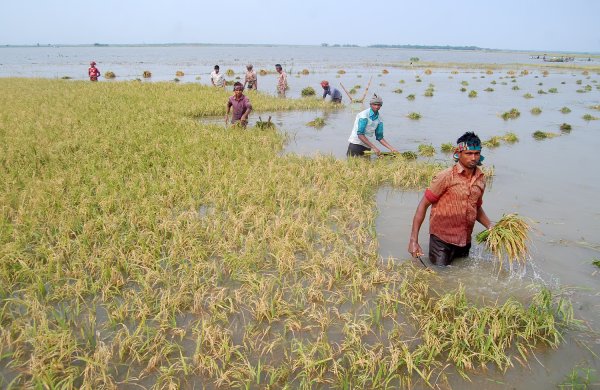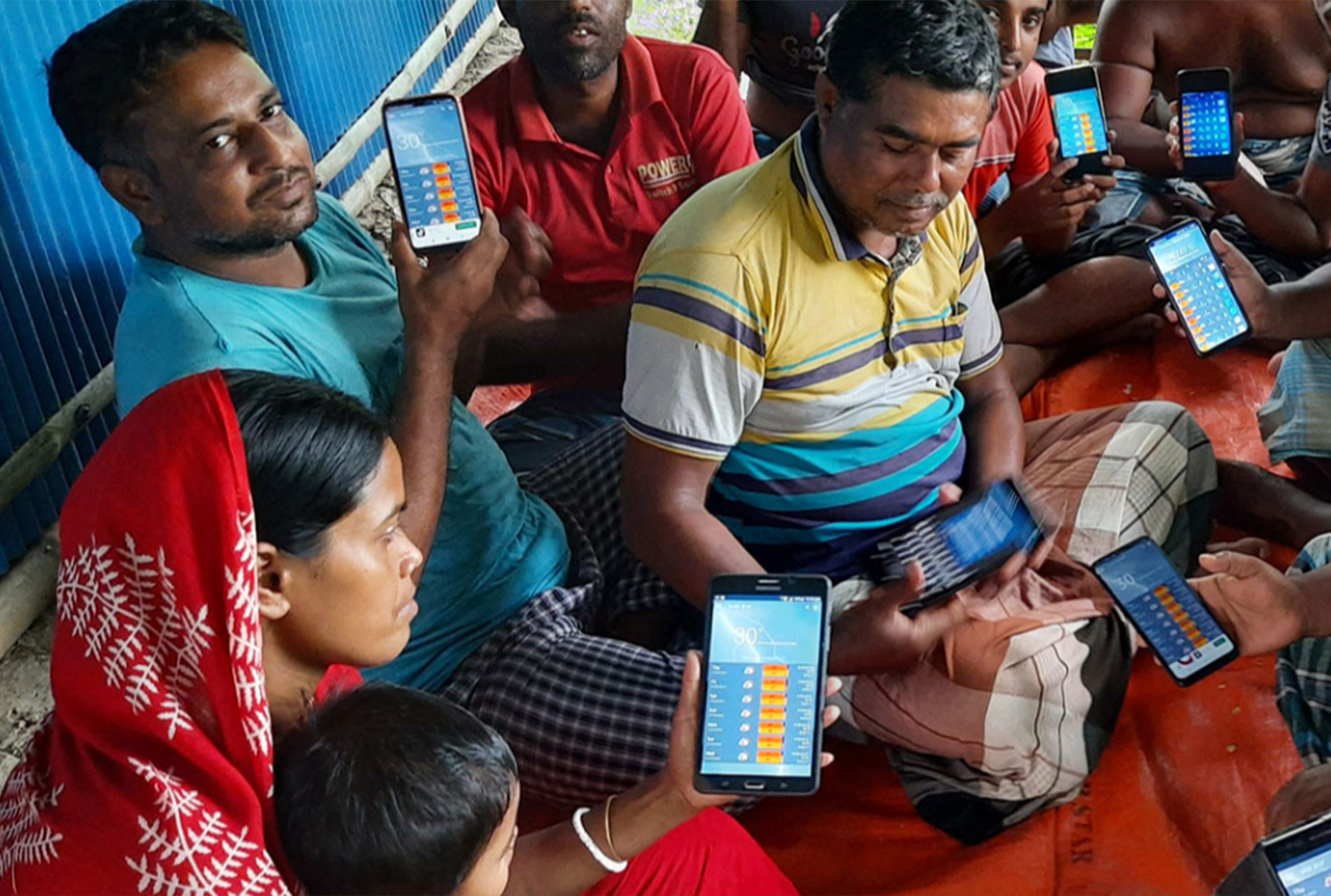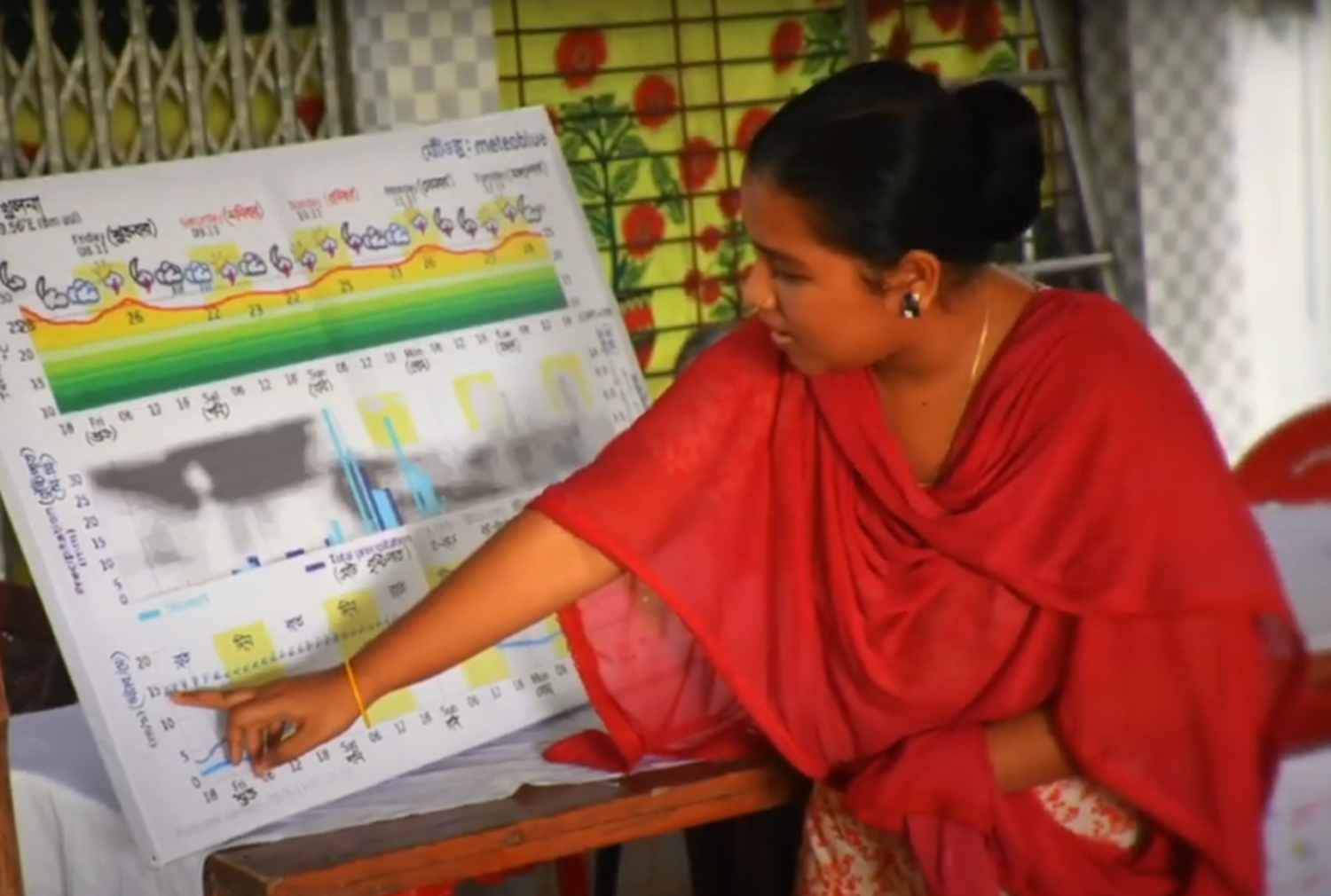
Longread
Long-term weather app helps farmers with climate adaptation
Climate change severely impacts farmers in developing countries, and the consequences for our food supply are increasingly felt. This issue features prominently on the agenda of the climate summit in Egypt from 6 to 18 November. Waterapps is a long-term weather app developed by WUR, which helps farmers adapt to rapidly changing circumstances.
COP27 Climate Conference
The annual climate summit has been held since 1995 and is to take place on the African continent for the third time. Fulco Ludwig, a Water and Climate Change professor at the Wageningen Institute for Environment and Climate Research (Dutch acronym WIMEK), is delighted: ‘Holding the conference in Africa provides us with a better perspective of the needs in that region. Countries in the West are focused mainly on reducing emissions to mitigate climate change. In contrast, many African countries require support in climate adaptation, making the changes required due to climate change.’
Many African countries require support in climate adaptation
Climate adaptation
Ludwig’s focus within WIMEK is climate adaptation. He studies the changes in the climate and how these impact life on earth. He wants to know how best to communicate about climate change so that those directly impacted are moved to act. To this end, he works on concrete solutions to help people adjust to changing circumstances.
Waterapps
A striking example of such a solution is Waterapps, which was developed by Ludwig and his team. Waterapps is a super advanced weather app used by, among others, farmers in Bangladesh and Ghana. Climate change renders the weather in these countries increasingly unpredictable. Heavy precipitation is interspersed with spells of drought. Disastrous for farmers as they base their decisions (when to sow, whether to apply manure) on the weather.
The sooner they know what lies ahead, the better they will be able to prepare
Fulco Ludwig clarifies: ‘The difficulty lies in the fact that weather forecasts in these countries focus on the short term, while farmers require long-term predictions. For example, you will want to sow when you know rainy days are ahead; otherwise, the seed dies. Conversely, manure or pesticides should be used during a dry spell; otherwise, the active substances wash away. This way, farmers can deploy their resources more effectively and prevent unnecessary expenses. Our Waterapps offers a long-term forecast, which is essential for farmers. The sooner they know what lies ahead, the better they are able to prepare.’

Indigenous knowledge and scientific data
Waterapps uses meteorological weather data integrated with the indigenous knowledge of the farmers. ‘Farmers have many local approaches to predicting the weather’, Ludwig explains. ‘The presence of certain insects and bird behaviour, in particular, have predictive value. Certain cloud formations and changes in atmospheric pressure are indicators of changes in the weather, as are the appearance of the sun and moon. I found this difficult to believe at first, but we were able to find a scientific explanation for some of the indicators. Including such elements in the weather forecast gave the farmers more confidence in the app.’
Farmers have many local approaches to predicting the weather
Together with the farmers
Thus, there is close collaboration with the farmers within the Waterapps project. Local agricultural spokespersons that have gained the farmers’ trust are also involved in the project. The argument is that if they recommend Waterapps, it must be worthwhile. Facebook and WhatsApp groups have been established to foster contact among farmers and enable them to ask their local agricultural spokesperson questions. Ludwig: ‘These questions are very concrete: Will tomorrow’s weather be suitable for applying manure? Will it rain? Should we harvest? A discussion group makes joint decisions on the best course of action possible. We don’t tell the farmers what to do; we decide with them. Thus, they gain confidence in the system and the meteorological data. This confidence was lacking, as they did not trust the information provided by the government.’
We don’t tell the farmers what to do; we decide with them

Training
Local weather schools train the framers in how to use the app. ‘An app alone does not work. Training is always required’, Ludwig says. ‘Farmers must learn how to make decisions based on the information and must understand the uncertainties. The app for farmers in Bangladesh worked with percentages, which proved too complicated for the farmers as they found it difficult to translate the data into actions. So, we provided training and translated the dependability into colour codes.’
Cyclone
He uses a concrete example to illustrate that the app works. ‘At a certain point, a cyclone was incoming. The daily weather forecast in Bangladesh provides a three-day forecast, which really allows too little time to respond. Thanks to a better model, we were able to see the storm seven days ahead of time. We were able to alert the communities with which we work, and they immediately began taking measures such as removing branches and trees, housing cattle in barns, and storing feed in case of flooding. They heeded our warning because they knew us. We would not have achieved this result with just an app or a text-message service.’
The WATERAPPscale project in Bangladesh
Unfortunately, your cookie settings do not allow the social media element to be displayed. check your settings.
Funding
Waterapps is a striking example of a climate adaptation solution. With regard to the climate summit, Fulco Ludwig notes that it is much easier for disadvantaged countries to obtain funding for climate mitigation than for climate adaptation. ‘It is much more difficult to prove the return on investment for adaptive measures. Solar panels and wind turbines are visible, and their yield is measurable. But the benefits of a training programme for millions of farmers is much more difficult to express in numbers.’
Continued use
The key challenge for the upcoming years is the sustained use of the app and training courses. Ludwig: ‘Our goal is for the local administrations and businesses to ultimately take over and enhance the app and training programmes. And, of course, we hope that an increasing number of farmers will start using Waterapps and that those willing to change pass it on to their network and future generations. There is still a world to be won.’
We hope that those willing to change pass it on to their network and future generations
Egypt Climate Summit
In the run-up to the climate summit in Egypt, WUR will present a number of stories with research examples of climate adaptation and mitigation. One of the topics at the climate summit in Egypt is climate-proof agriculture. WUR is working on this in various areas. 'Water apps', a long-term weather app for farmers including Bangladesh and Ghana, countries where the weather is becoming increasingly unpredictable due to climate change.